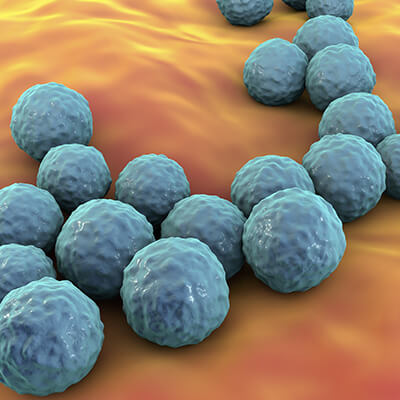Superbugs are not a specific type of bacteria. All bacterial species can become superbugs. But in order to prevent superbug infections and the development of therapeutic drugs in priority areas, knowing the common superbugs to watch out for can be helpful.
The World Health Organization (WHO) has identified 12 families of bacteria that are most in need of new antibiotic treatments. They are divided into three categories: critical, high and moderate. These 12 bacteria are prioritized based on the level of resistance already present in each. The issue is critical as antibiotic-resistant superbugs become more common.
Critical pathogens are those that cause serious infections and high mortality rates. Three bacteria are listed as critical: Acinetobacter Baumannii, Pseudomonas Aeruginosa, and Enterobacterales.
High Priority Bacteria
Enterococcus faecium: Enterococci have developed a variety of mechanisms of resistance to several antibiotics like aminoglycosides, B-lactams, tetracyclines, quinolones, and vancomycin (glycopeptide).
Staphylococcus aureus: S. aureus strains are resistant to the isoxazoyl penicillins such as methicillin, oxacillin and flucloxacillin and resistant to vancomycin-intermediate.
Helicobacter pylori: Helicobacter pylori infections have been treated using the macrolide antibiotic, clarithromycin. Clarithromycin resistance is increasing worldwide and is the most common cause of H. pylori treatment failure.
Campylobacter spp.: Campylobacter remain a leading cause of bacterial gastroenteritis worldwide. Fluoroquinolones are among the most common treatments. Selection pressure in the presence of fluoroquinolones rapidly leads to resistance in Campylobacter.
Salmonellae: Salmonella is co-resistance to the first-line antibiotics ampicillin, chloramphenicol and trimethoprim/sulfamethoxazole. Resistance of Salmonella to fluoroquinolone has been increasingly reported after the introduction of fluoroquinolone drug therapy.
Neisseria gonorrhoeae: Antibiotic resistance in Neisseria gonorrhoeae is rapidly increasing. Extensively resistant Neisseria gonorrhoeae is resistant to both penicillins, sulfonamides, tetracyclines, fluoroquinolones, and macrolides.





Comments